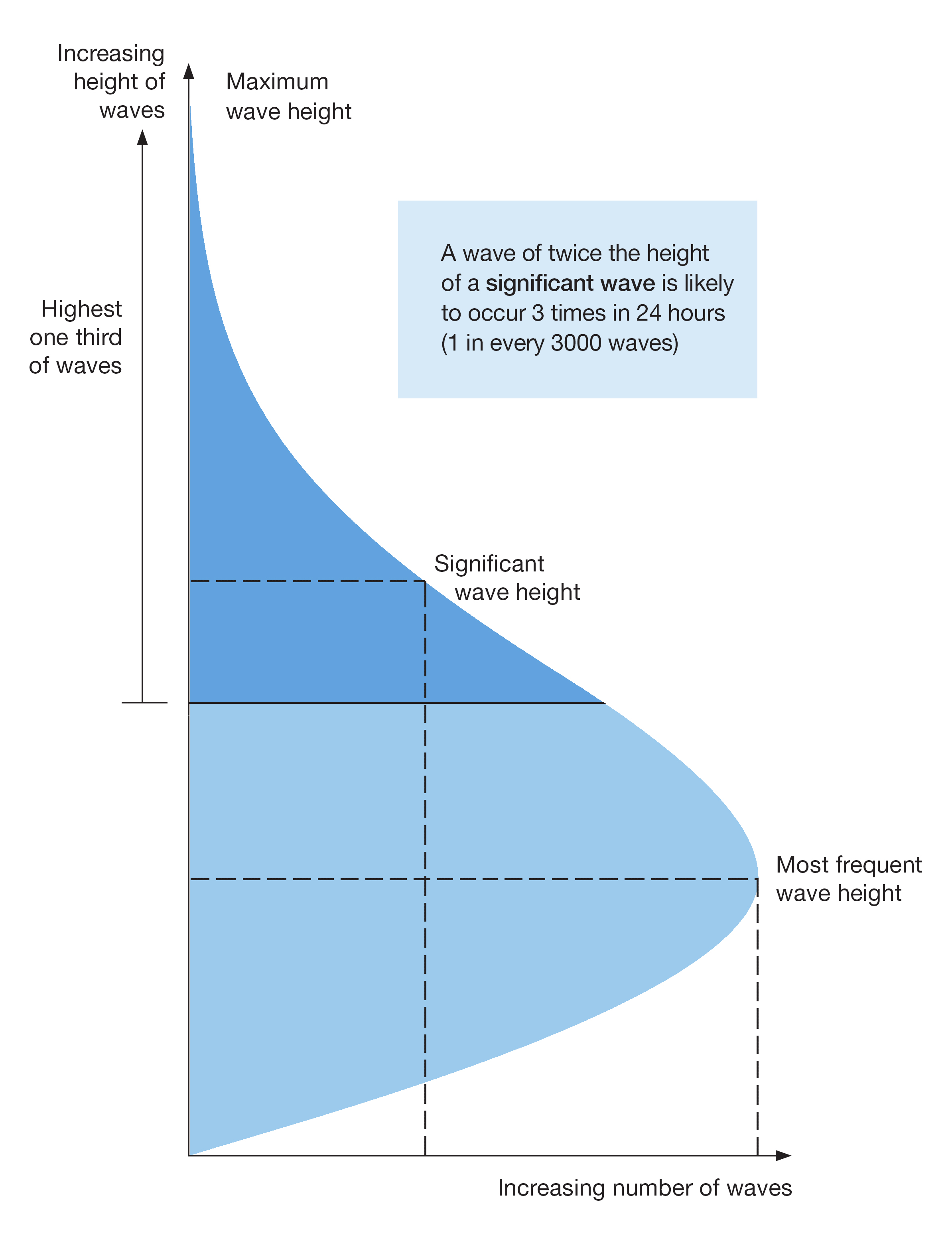Ruling the waves: How a simple wave height concept can help you judge the size of the sea
17 December 2015
Predicting the size of the wind-generated waves that roll in from the sea around Australia is not as hard as you might think—especially if you understand the concept of ‘significant wave height’.
While fishing or out on the water you will experience a wide range of wave heights during your activity, and occasionally a genuine ‘big one’. However wonderful a prospect they are to surfers, big waves can pose a serious danger to boaters and fishermen—particularly when they arrive at reefs, bar crossings and deep-water coastlines, where the first indication of a wave’s true size can be as it breaks on the rocks where you’re standing.
The size and behaviour of waves are determined by a range of factors, from the direction of the swell to the speed of the tide, prevailing ocean currents, the depth of the water, the shape of the seafloor, the presence of reefs and sandbanks, even the temperature of the ocean.
However, there is one factor that rules the size of the waves more than any other—the wind. Waves are caused by wind blowing over the surface of the ocean and transferring energy from the atmosphere to the water. The height of waves is determined by the speed of the wind, how long it blows, and crucially the ‘fetch’—the distance that the wind blows in a single direction over the water.
Naturally, bigger waves result from conditions that cause strong winds to blow for a sustained period over a large expanse of ocean. The resulting waves can travel for hundreds or even thousands of kilometres, smaller waves being absorbed by larger ones, faster waves overtaking slower—gradually growing and arranging themselves into the regular ‘sets’ so familiar to surfers and paddle-boarders.
The result of these interactions is that it is normal to experience a wide range of wave heights when on the water.
A universal convention to measure wave height
Utilising the standard international convention, the Bureau uses the concept of ‘significant wave height’ to notify ocean-goers of the size of swell and wind waves (or ‘sea waves’) in its coastal forecasts. Significant wave height is defined as the average wave height, from trough to crest, of the highest one-third of the waves.
Devised by oceanographer Walter Munk during World War II, the significant wave height provides an estimation of wave heights recorded by a trained observer from a fixed point at sea. As the following graph shows, a sailor or surfer will experience a typical ‘wave spectrum’ during their activity, containing a low number of small waves (at the bottom) and a low number of very large waves (at the top). The greatest number of waves is indicated by the widest area of the spectrum curve.
The highest one-third of waves is highlighted in dark blue in the graph below, and the average height of waves in this group is the significant wave height:

Significant wave height
This statistical concept can be used to estimate several parameters of the waves in a specific forecast. The highest ten per cent of the waves are roughly equal to 1.3 times the significant wave height, and the likely maximum wave height will be roughly double the significant height.
Expect double the height, three times a day
While the most common waves are lower than the significant wave height, it is statistically possible to encounter a wave that is much higher—especially if you are out in the water for a long time. It is estimated that approximately one in every 3000 waves will reach twice the height of the significant wave height—roughly equivalent to three times every 24 hours. As a reminder of this important safety concept, the Bureau includes a message that maximum waves may be twice the significant wave height in all marine forecasts.

Most frequent, 'significant' and maximum wave heights
When planning a voyage, mariners should not focus exclusively on the significant wave height in a forecast. It is equally important to recognise the concept of the wave spectrum, know the definition of significant wave height, and be able to determine the expected range of wave heights.
Much like the median house price guide in the real estate sector, the significant wave height is intended as an indicative guide that can help you gauge the range of wave sizes in a specific area. While sailors can use the figure to evaluate the safety of an open-water voyage, surfers may use it to rate the likelihood of at least one ‘big one’ arriving while they’re out in the surf. Rock fishers should also be aware of the dangers of the ‘big one’ washing them off the rocks.
Wave forecasts in Australia
Wave height information for seas and swells is included in the Bureau’s Coastal Waters and Local Waters forecasts, covering the Australian coastline and capital city waterways. These forecasts are also transmitted by marine radio (HF and VHF).
Maps and tables of swell and wind wave heights are also available on MetEye—the Bureau’s interactive weather-mapping tool—which allows mariners to ‘play the weather forwards’ over a specific stretch of water for the coming week.
More information on MetEye’s wind and wave features can be found in these recent articles:
MetEye adds new swell maps and wave forecasts to skippers’ planning toolbox
How MetEye wind and wave maps can keep you and your boat safe in coastal waters
More information
About marine weather services: Information on the Bureau’s marine forecasts and terminology.
Preparing for your trip: Boating tips from the Australia New Zealand Safe Boating Education Group.
Surf Ed: Surfing and beach safety information from Surf Life Saving Australia’s BeachSafe website.
Important note: Please be aware that wind and wave forecasts are averages. Wind gusts can be 40 per cent stronger than the forecast, and stronger still in squalls and thunderstorms. Maximum waves can be twice the forecast height.



Comment. Tell us what you think of this article.
Share. Tell others.